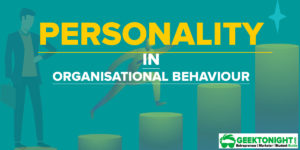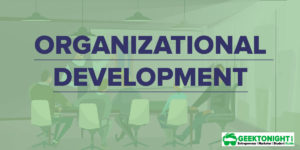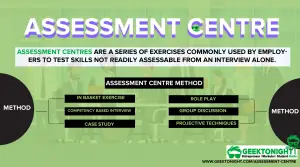Theories of Learning
Theories of learning have been developed as models of learning which explain the learning process by which employees acquire a pattern of behavior. There are four theories of learning discussed below.
Several experts are skeptical about how a new behavior is acquired and this has resulted into the development of several theories of learning.
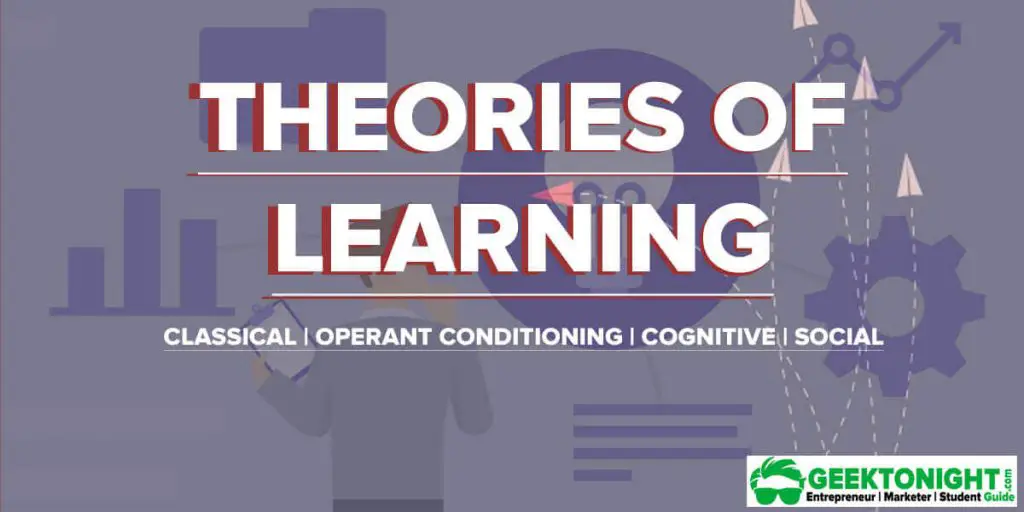
Table of Content
- Classical conditioning theory
- Operant conditioning theory
- Cognitive learning theory
- Social learning theory
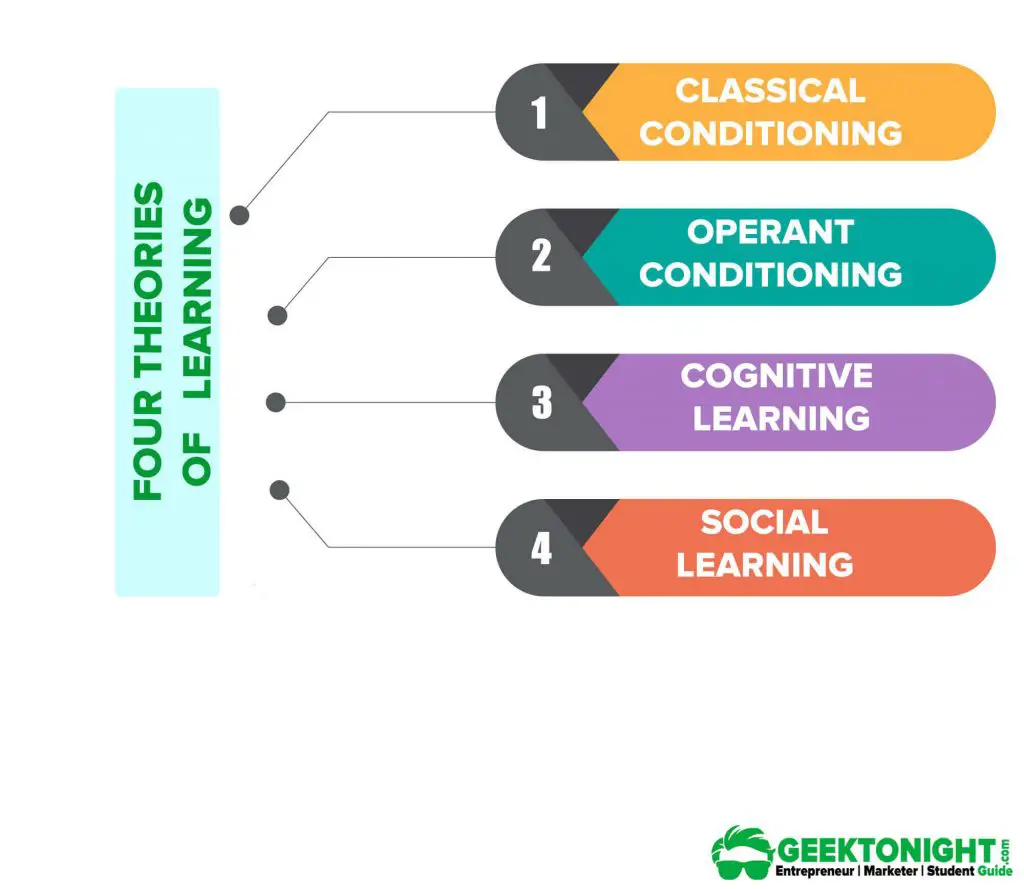
Classical Conditioning
Classical conditioning can be defined as a process in which a formerly neutral stimulus when paired with an unconditional stimulus, becomes a conditioned stimulus that elicits a conditioned response. (Luthans 1995)
Ivan Pavlov, a Russian psychologist (Nobel Peace Prize) developed classical conditioning theory of learning based on his experiments to teach a dog to salivate in response to the ringing of a bell.
- When Pavlov presented meat (unconditioned stimulus) to the dog, he noticed a great deal of salivation (conditioned response). But, when merely bell was rung, no salivation was noticed in the dog.
- Then, when next Pavlov did was to accompany the offering of meat to the dog along with ringing up of bell.
- He did this several times. Afterwards, he merely rang the bell without presenting the meat. Now, the dog began to salivate as soon as the bell rang.
- After a while, the dog would salivate merely at the sound of the bell, even if no meat were presented. In effect, the dog had learned to respond i.e. to salivate to the bell.
Pavlov concluded that the dog has become classically conditioned to salivate (response) to the sound of the bell (stimulus). It will be seen that Classical Conditioning learning can take place amongst animals based on stimulus-response (SR) connections.
Classical Conditioning Examples
This stimulus-response connection (S-R) can be applied in management to assess organizational behavior. Historically when a CEO visits an organization, production charts are updated, individuals put on a good dress, window panes are cleaned and floors are washed. What all one has to do is to just say that the Top Boss is visiting.
You will find that all the above work is undertaken (response) without any instructions. Because the people in the organization have learned the behaviour (conditioned). It has caused a permanent change in the organization (S-R connections).
Factors Influencing Classical Conditioning
There are four major factors that affect the strength of a classically conditioned response and the length of time required for classical conditioning.
- The number of pairings of the conditioned stimulus and the unconditional stimulus.
In general, the greater the number of pairings, the stronger the conditioned response.
- The intensity of the unconditioned stimulus.
If a conditioned stimulus is paired with a very strong unconditioned stimulus, the conditioned response will be stronger.
- The most important factor is how reliably the conditioned stimulus predicts the unconditioned stimulus.
For example, a tone that is always followed by food will elicit more salivation than one that is followed by food only some of the time.
- The temporal relationship between the conditioned stimulus and the unconditioned stimulus.
Conditioning takes place faster if the conditioned stimulus occurs shortly before the unconditioned stimulus.
Limitations of Classical Conditioning
Classical conditioning has real limitation in its acceptability to human behaviour in organisations for at least three reasons:
- Human beings are more complex than dogs but less amenable to simple cause-and-effect conditioning.
- The behavioural environment in organisations is also complex.
- The human decision-making process being complex in nature makes it possible to override simple conditioning.
An alternate approach to classical conditioning was proposed by B.F. Skinner, known as Operant Conditioning, in order to explain the more complex behaviour of human, especially in an organisational setting
Read: What is Motivation?
Operant Conditioning
Operant Conditioning is concerned primarily with learning as a consequence of behaviour Response-Stimulus (R-S). In Operant Conditioning particular response occurs as a consequence of many stimulus situations.
- Operant conditioning argues that behaviour is a function of its consequences.
- People learn to behave to get something they want or avoid something they don’t want.
- Operant behavior means voluntary or learned behavior.
- The tendency to repeat such behaviour is influenced by the reinforcement or lack of reinforcement brought about by the consequences of the behaviour.
Reinforcement therefore strengthens behaviour and increases the likelihood it will be repeated.
Operant Conditioning Examples
This Response-Stimulus (R-S) can be applied in management to assess organizational behavior. From an organisational point of view, any stimulus from the work environment will elicit a response. The consequence of such a response will determine the nature of the future response.
For example, working hard and getting the promotion will probably cause the person to keep working hard in the future.
Factors Influencing Operant Conditioning
In operant conditioning, several factors affect response rate, resistance to extinction and how quickly a response is acquired.
- Magnitude of reinforcement
In general, as magnitude of reinforcement increases, acquisition of a response is greater. For example, workers would be motivated to work harder and faster, if they were paid a higher salary.
- Immediacy of reinforcement
Responses are conditioned more effectively when reinforcement is immediate. As a rule, the longer the delay in reinforcement, the more slowly a response is acquired.
- Level of motivation of the learner
If you are highly motivated to learn to play football you will learn faster and practice more than if you have no interest in the game.
Read: What is Attitude?
Cognitive Learning Theory
Behaviourists such as Skinner and Watson believed that learning through operant and classical conditioning would be explained without reference to internal mental processes.
Today, however, a growing number of psychologists stress the role of mental processes. They choose to broaden the study of learning theories to include such cognitive processes as thinking, knowing, problem-solving, remembering and forming mental representations.
According to cognitive theorists, these processes are critically important in a more complete, more comprehensive view of learning.
Learning by insight
Wolfang Kohler (1887 – 1967): A German Psychologist studied anthropoid apes and become convinced that they behave intelligently and were capable of problem solving.
- In one experiment Kohler hung a bunch of bananas inside the caged area but overhead, out of reach of the apes; boxes and sticks were left around the cage.
- Kohler observed the chimp’s unsuccessful attempts to reach the bananas by jumping or swinging sticks at them.
- Eventually the chimps solved the problem by piling the boxes one on top of the other until they could reach the bananas.
Kohler’s major contribution is his notion of learning by insight. In human terms, a solution gained through insight is more easily learned, less likely to be forgotten, and more readily transferred to new problems than solution learned through rote memorization.
Latent Learning and Cognitive Maps
Edward Tolman (1886 – 1959) differed with the prevailing ideas on learning
(a) He believed that learning could take place without reinforcing.
(b) He differentiated between learning and performance. He maintained that latent learning could occur. That is learning could occur without apparent reinforcement but not be demonstrated until the organism was motivated to do so.
Read: What is Perception?
Albert Bandura contends that many behaviours or responses are acquired through observational learning. Observational learning, sometimes called modelling, results when we observe the behaviours of others and note the consequences of that behaviour.
Social learning theory is a behavioral approach. The approach basically deals with learning process based on direct observation and the experience.
Social learning theory integrates the cognitive and operant approaches to learning. It recognises that learning does not take place only because of environmental stimuli (classical and operant conditioning) or of individual determinism (cognitive approach) but is a blend of both views.
Usually, the following four processes determine the influence that a model will have on an individual:
- Attention Process
- Retention Process
- Motor Reproduction Process
- Reinforcement Process
- Attention Process: People can learn from their models provided they recognise and pay attention to the critical features. In practice, the models that are attractive, repeatedly available or important to us tend to influence us the most.
- Retention Process: A model’s influence depends on how well the individual can remember or retain in memory the behaviour/action displayed by him when the model is no longer readily available.
- Motor Reproduction Process: Now, the individual needs to convert the model’s action into his action. This process evinces how well an individual can perform the modelled action.
- Reinforcement Process: Individuals become motivated to display the modelled action if incentive and rewards are provided to them.
Self-efficacy
Central to Bundura’s social learning theory is the notion of self-efficacy.
Self-efficacy is an individual’s belief and expectancies about his or her ability to accomplish a specific task effectively.
According to Bandura, self-efficacy expectations may be enhanced through four means as follows:
- Performance accomplishments (just do it)
- Vicarious experiences (watch someone else do it)
- Verbal persuasion (be convinced by someone else to do it)
- Emotional arousal (get excited about doing it)
Management of human resource plays a dominant role in the growth of an organization. Various material inputs in the organization can be put to its optimum utilization if the employees display a positive attitude towards organizational systems, processes, activities and have appropriate interpersonal behavior.
Read: What is Learning?
Reference
- Robbins, Stephen P. 2010. Organizational Behaviour. New Delhi: Prentice-Hall.
- Luthans Fred, “Organizational Behaviour”, Mc Graw Hills, International Edition, 1995
Go On, Share & Help your Friend
Did we miss something in Organizational Behavior Tutorial or You want something More? Come on! Tell us what you think about our post on Theories of Learning, Classical Conditioning, Operant Conditioning, Cognitive Learning Theory, Social Learning Theory | Organisational Behavior in the comments section and Share this post with your friends.
Human Resources Tutorial
(Click on Topic to Read)


